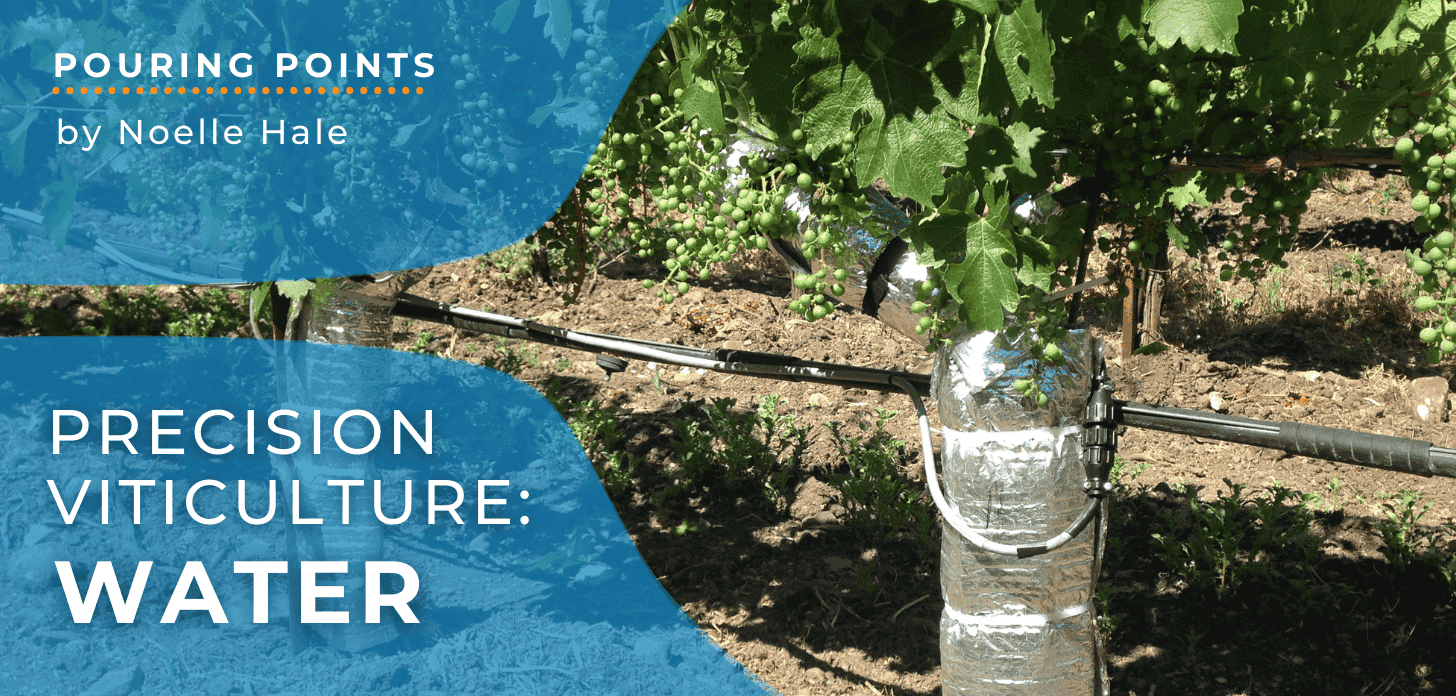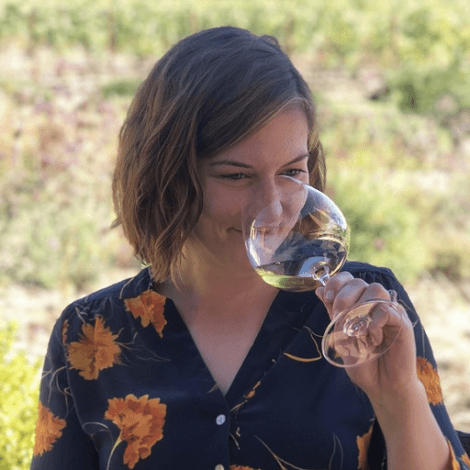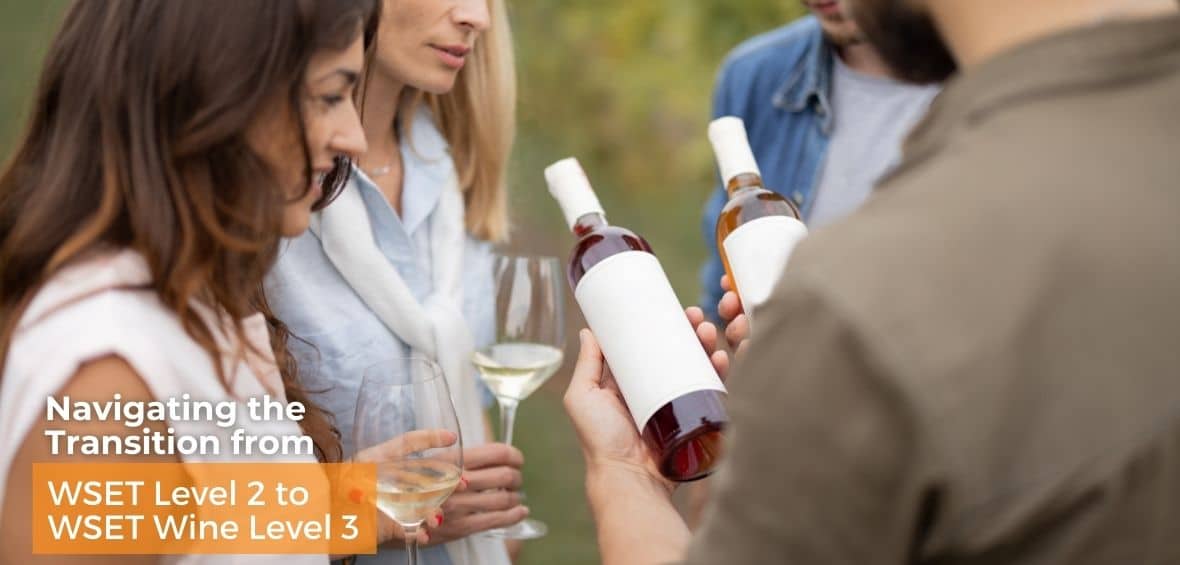by Noelle Hale
In this final article in our three-part series, we’ll look at ways grape growers are using technology to be as effective as possible with their water use in the face of drought and a changing climate.
Water is a foundational element of crop production. Without access to water, plants can’t survive. As water has become scarcer in the western United States, home to much of America’s wine grape production, grape growers (and other farmers) are increasingly being asked to use less, and there’s no end in sight to the dry conditions.
As previously discussed in our articles on land and air, precision viticulture technologies can help growers make data-driven decisions about vineyard soils, vine health, disease mitigation, and more, and they can also help with water management. In this final article in our three-part series, we’ll look at ways grape growers are using technology to be as effective as possible with their water use in the face of drought and a changing climate.
But first, a quick science lesson. As a grape-growing season progresses and temperatures rise, water evaporates more quickly out of the soil, and vines also use more water to stay cool and photosynthesize nutrients. Vine leaves have tiny pores on their undersides, called stomata, which normally release water in a process known as transpiration. Think of it as the way a vine breathes. The measurement of the amount of water being lost through the soil and the vine is known as evapotranspiration (evaporation + transpiration).
During heat spells, vines will close their stomata to avoid losing too much water. This means the amount of photosynthesis happening either slows or stops, similar to how human metabolism slows during fasting. A lack of photosynthesis and resulting lack of nutrients is stressful for the vine. While you may have heard that vines need to struggle to make great wine, after a certain point, vine stress is no longer beneficial. During a heat wave, this can lead to leaf loss and vine death. Viticulturists are responsible for knowing how much water stress will lead to extra-concentrated berries and how much will lead to fried leaves and weakened vines.
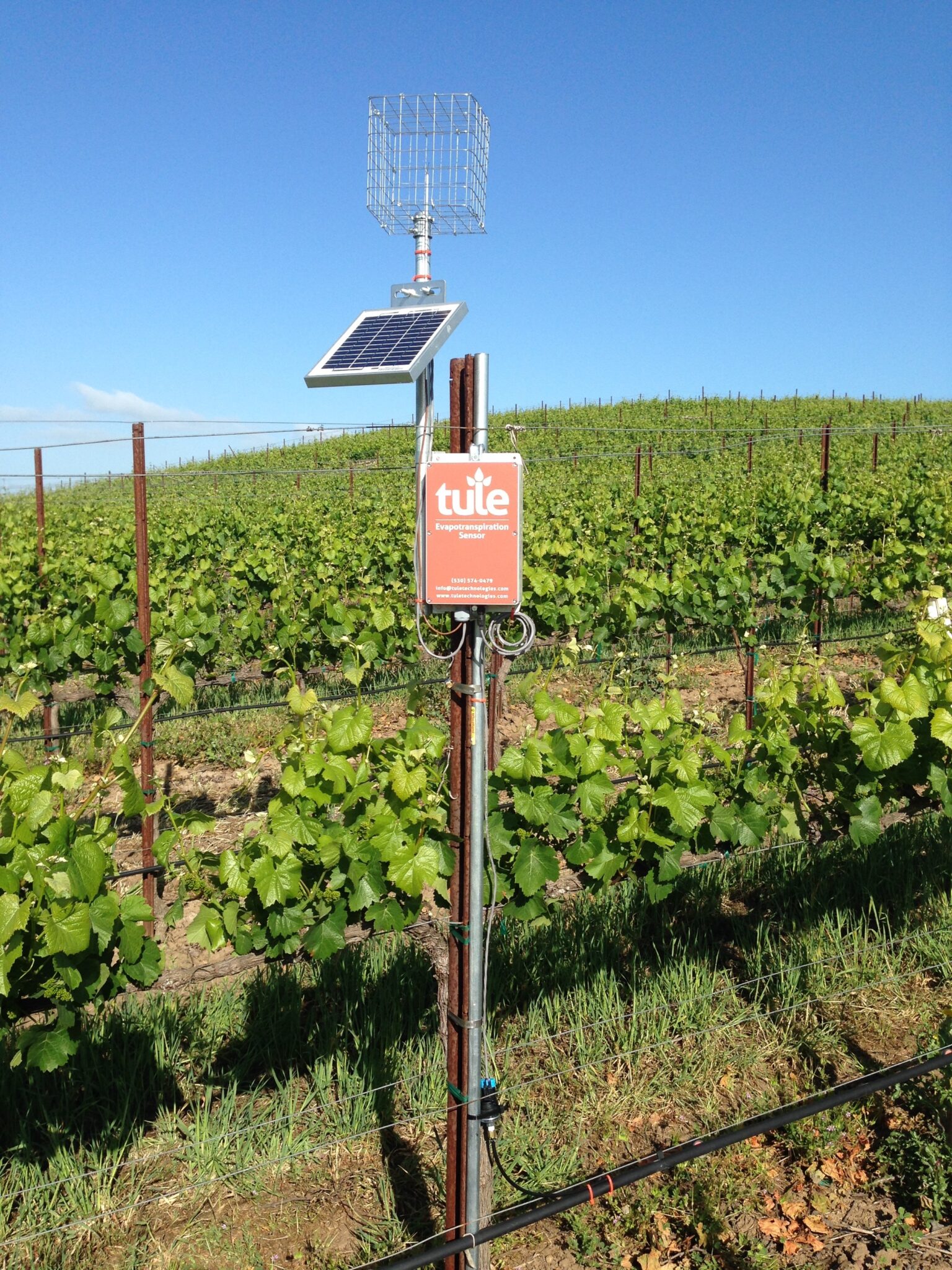
By measuring the rate at which evapotranspiration is occurring in a vineyard and comparing it against weather forecasts, viticulturists can predict how stressed their vines will be. This can help them figure out when and how much to irrigate to avoid damage.
Tule Sensors
Tule (pronounced “too-lee”) sensors do exactly that, giving growers irrigation data that can be viewed on a smartphone. The system also monitors water use as irrigation is happening, so if water use is unexpectedly high, it’s time to go look for a leak in the line. This is all in contrast to a few decades ago, when irrigation frequency and amounts were essentially educated guesses.
Nick Filice, Grape Supply Manager of Silver Oak Cellars in Napa Valley, says, “Ten years ago, we were digging holes in the vineyard to see how wet it was and making a decision from there. Now we’re really trying to extend out our intervals and discuss if we can go another week without water.”
However, Craig Winn, Director of Viticulture and Technology at Scheid Family Wines in Monterey, says there is still room for older methods of monitoring water usage. “We have weather stations, we have sensors in the ground, we have sensors within the canopy. But standing out there in the vineyard, wetting your finger, and holding it up in the air helps too,” he explains.
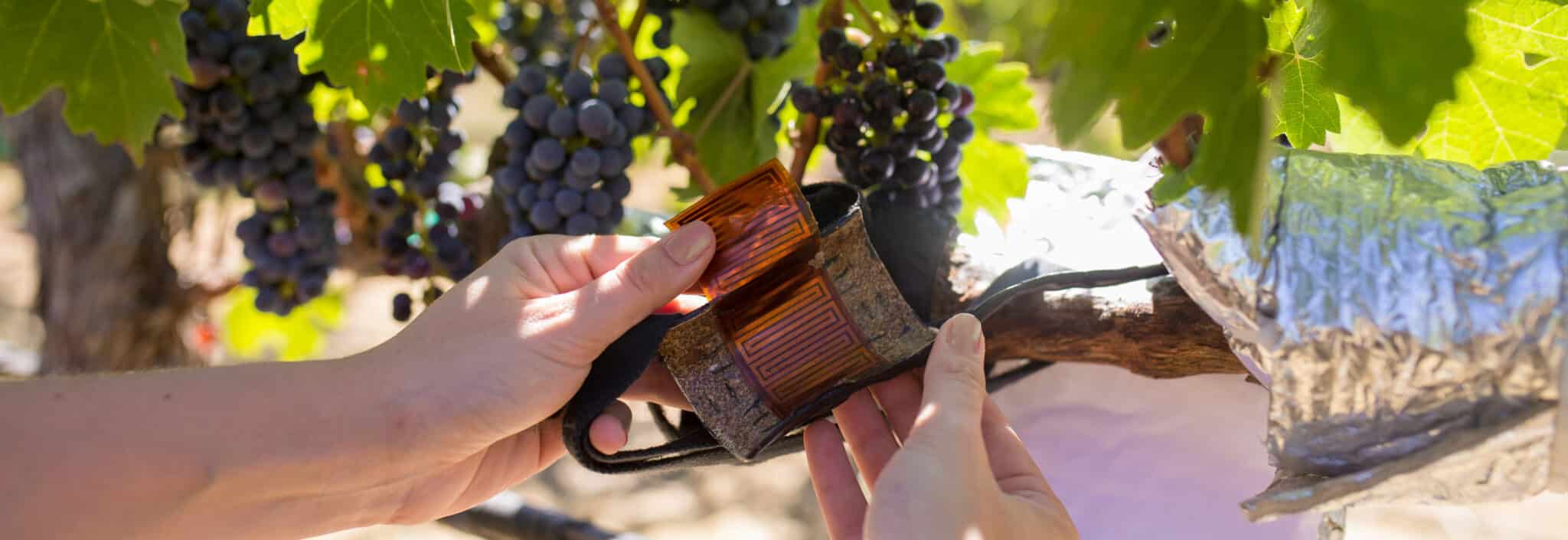
Below: Sap flow monitors in the vineyard. Photo credit: Fruition Sciences. (Hover over image to pause slide, click to enlarge).
Precision Viticulture in the Future
While precision viticulture technologies can be incredibly useful for targeting vineyard inputs, there is still a large number of growers who have not adopted them. There are a variety of reasons for this, ranging from their cost to a lack of necessity.
Brandon Sparks-Gillis, co-owner of Dragonette Cellars in Santa Barbara, says that unlike Napa and some parts of northern California that have seen their average annual rainfall levels drastically fall in recent years, leading to irrigation in places that historically didn’t require it, rainfall in Santa Barbara County has always been low.
“We’ve been a region that’s had to utilize irrigation from the get-go. We’re a dry region by nature, and that reliance on irrigation has made vineyard managers really aware of what to look for in the vines,” he says. “A lot of vineyard managers down here tend to prefer to use their own eyes versus technology.”
But change may be coming. Sparks-Gillis and the Dragonette team source grapes from a variety of vineyard sources in Santa Barbara, and he has seen wineries forced to drill their existing wells deeper, some more than once, to continue obtaining reliable water. Others have had to dig new wells. These costs, as well as the potential for new water regulations that could restrict water access or make it more expensive, may eventually make investment in precision irrigation techniques a more economical choice.
“Water isn’t very highly regulated down here, but when regulation hits, it’s going to force everyone to step up their game,” he says. “On average, [precision viticulture methods] will become more important tools going down the road.” However, Sparks-Gillis also believes precision viticulture is best-used as part of a suite of tools, including walking vine rows and looking at the fruit and canopy.
This echoes a belief among many vineyard managers that despite new options for targeting and fine-tuning their operations, farming has always been a hands-on business, and that won’t be changing any time soon.
As Winn says, “We’re monitoring balance, and we’re irrigating to maintain the balance and yield of the vines. It’s in conjunction with cane weights, cluster counts, and climatic conditions of the soil. We take everything put together.”

